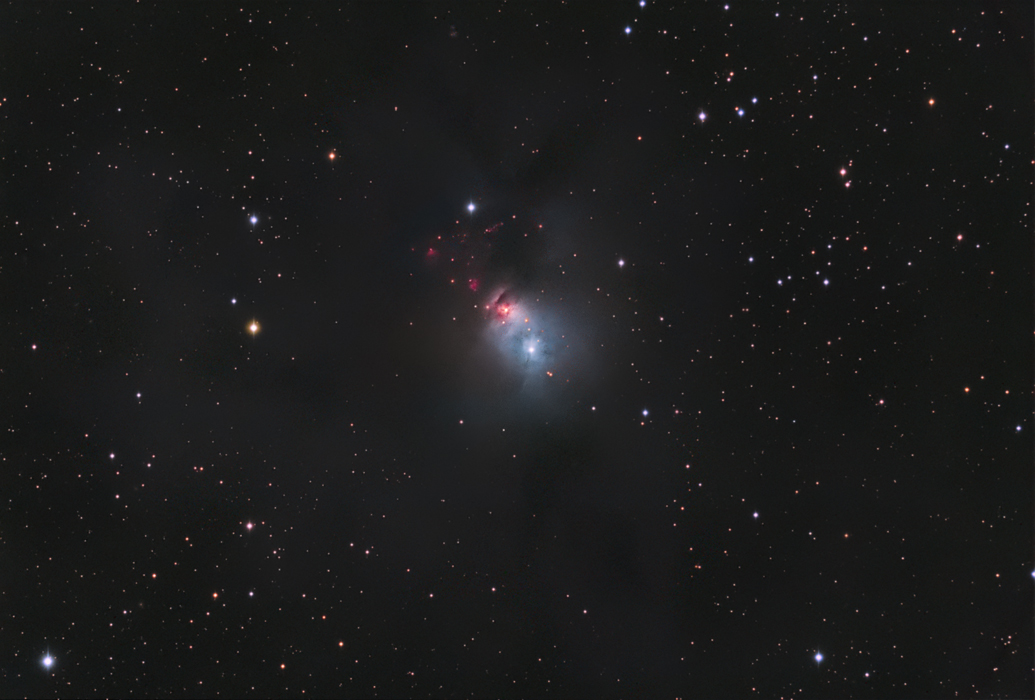Time Travel Research Center © 2005 Cetin BAL - GSM:+90 05366063183 - Turkey / Denizli
NGC 1333

Please click here or on image for a higher resolution view.
Please click here for a rollover of this image ...
Please
click here for movie superimposing the ...
Characteristics:
Magnitude: ? (faint)
Size: about 9'
Distance: 1000 light years
RA: 03h 29m 29s
Dec: 31 degrees 23' 07"
Description:
NGC 1333 is located in the constellation Perseus and is a
beautiful example of a reflection nebula. Stars forming within this nebula
are less than a million years old, which is young by stellar standards.
Blue light emitted by the central star is preferentially scattered by
surrounding dust (resulting in the characteristic blue color of the
reflection nebula). Focal patches of hydrogen gas in this region glow in
reddish-brown light, representing Ha emission induced by ultraviolet
radiation from nascent stars forming within the nebula. Much of this region
is filled with dense dust that obscures visible light emitted from
protostars within the nebula. However, the Spitzer infrared telescope is
capable of revealing many of the underlying stars and associated stellar
jets that emit in the infrared (a wavelength that penetrates the heavy dust
shroud surrounding this region). Like
NGC 7023 and the Cocoon Nebula, this region
is comprised of all three main nebulosities: reflection, emission, and dark.
More information about this region may be found here.
Photographic Details:
Date: September 29, 2006
Scope: Takahashi FS102 at f6, on the G11 Losmandy Mount.
Autoguider: SBIG STV with e-finder.
Camera: FLI Maxcam CM10
Filter: Astronomik Type II Clear, R, G, B filter set.
Exposures: LRGB. 32 x 4' Luminance; 4 x 5'
R; 4 x 5' G; 6 x 8' B (all unbinned).
Conditions: Temperature 65 down to 50
degrees F during session; above average transparency; average seeing; a
little breezy.
Processing: Debloomed with Ron Wodaski's Debloomer software, followed by
calibration and alignment in Maxim. Sigma combined using RC Sigma Reject
MaximDL, followed by DDP in ImagesPlus (IP). Further processing in
Photoshop CS (16 bit format).